The DJI Air 3 has the same main lens and sensor size as The Mini 3 Pro, so we should expect the quality of the footage to be very similar. A major difference is the presence of a dual-lens system in the new model. The Air 3 has two 10-bit color modes, D-Log M and HLG
| DJI Air 3 | DJI Mini 3 Pro |
|---|---|
| The second 70mm lens opens new possibilities for cinematic footage | Weight below the threshold of 250 grams |
| Video resolution is limited to 4k | The camera rotates for vertical footage |
| A host of useful functionalities for video | Very good performance in low-light footage |
| Outstanding signal transmission | |
| Waypoints mode for video | |
| Omnidirectional obstacle avoidance | |
| Video resolution limited to 4k | |
| HLG mode not working properly at the moment |
In this article, we will see all the differences between the two models regarding video quality and functionalities
Some other articles about the DJI Air 3 you may find interesting
- Air 3 vs. Mini 3 Pro for photography
- Air 3 video review
- Camera settings for photography with the Air 3
- Panorama mode with the Air 3
- Air 3 photography review
- Air 3 Mastershot tutorial
- Telephoto lens of the Air 3
If you prefer to watch this as a video, you will find my YouTube version at the end of this article
Specs and Features For Video
Air 3
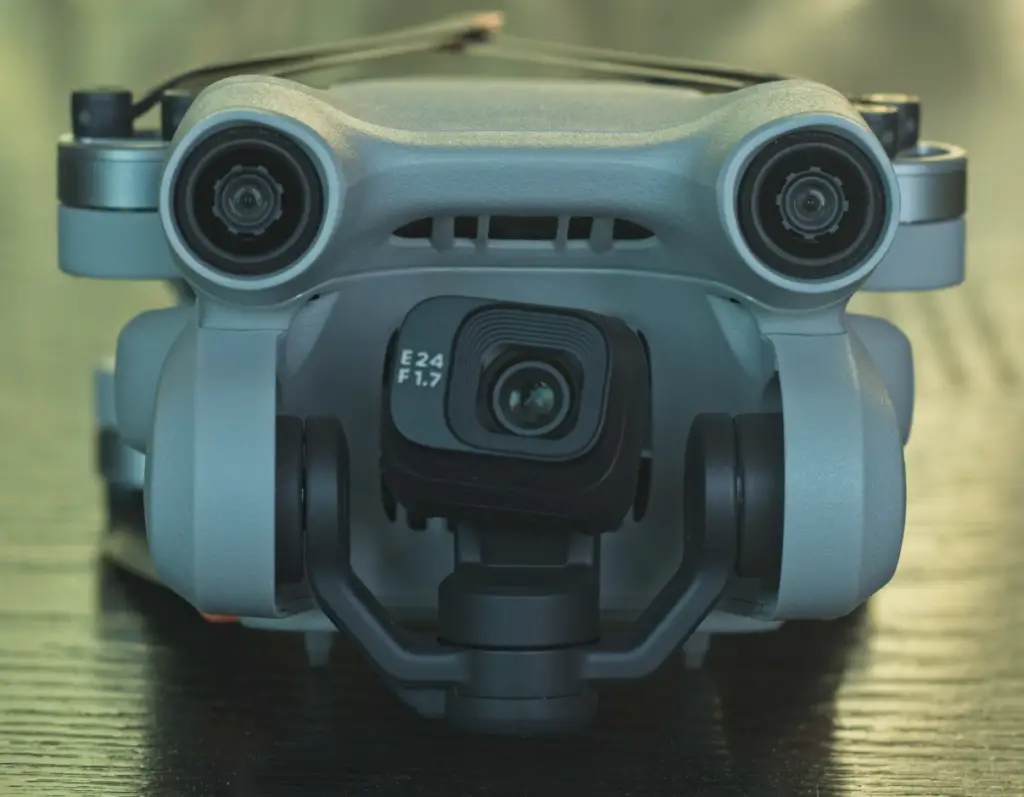
The wide-angle lens of the Air 3 has the same specs as the Mini 3 Pro, with a 1/1.3” sensor, a field of view of 24mm, and a fixed aperture of f1.7. The video resolution is 4k and the maximum bit rate150 Mbps
Many users were hoping for a bigger sensor and a resolution of over 5k like the Air 2s, but DJI has chosen to leave these two features for the flagship model, the Mavic 3
In exchange, the new model has been supplied with a host of very powerful features, some of them previously exclusive to the top version, like the omnidirectional obstacle avoidance system and Waypoint mode
The new features of the Air 3 include:
- A much-improved signal transmission, the only real weak point of the Mini 3 Pro
- A longer battery life announced at 46 minutes vs. 34 for the Mini 3 Pro
- Higher speed and wind resistance
- Two 10-bit color modes, D Log and HLG, besides the 8-bit normal
- A frame rate of 100 fps at 4k for super slow motion
These functionalities are very useful and make shooting footage an enjoyable and stress-free experience. I will analyze them in other articles, as in this one I will focus on video quality
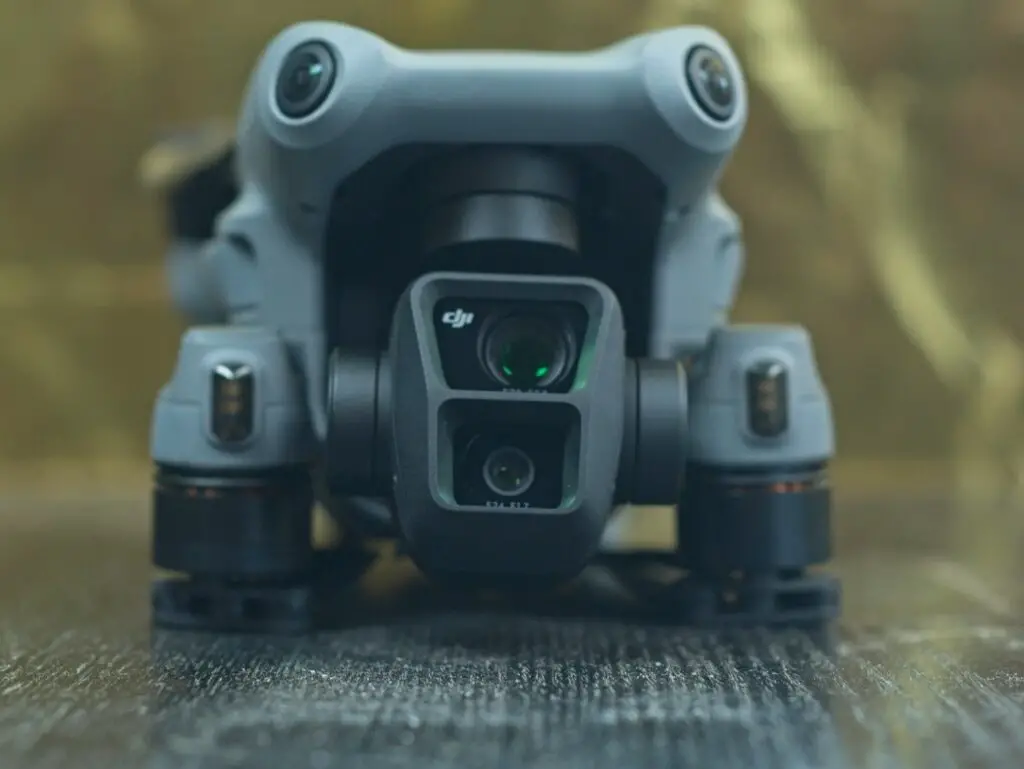
The most important new feature is the dual lens system which adds to the wide-angle lens a moderate telephoto one with a field of view equivalent to 70mm and a fixed aperture of f2.8
The second lens is a true game-changer, as it adds plenty of extra creative possibilities for parallax effects and a different representation of the proportions between the elements in the foreground and the ones in the background
Mini 3 Pro
Apart from the more affordable price, the Mini 3 Pro has the advantage of a weight below the important threshold of 250 grams for more relaxed regulations
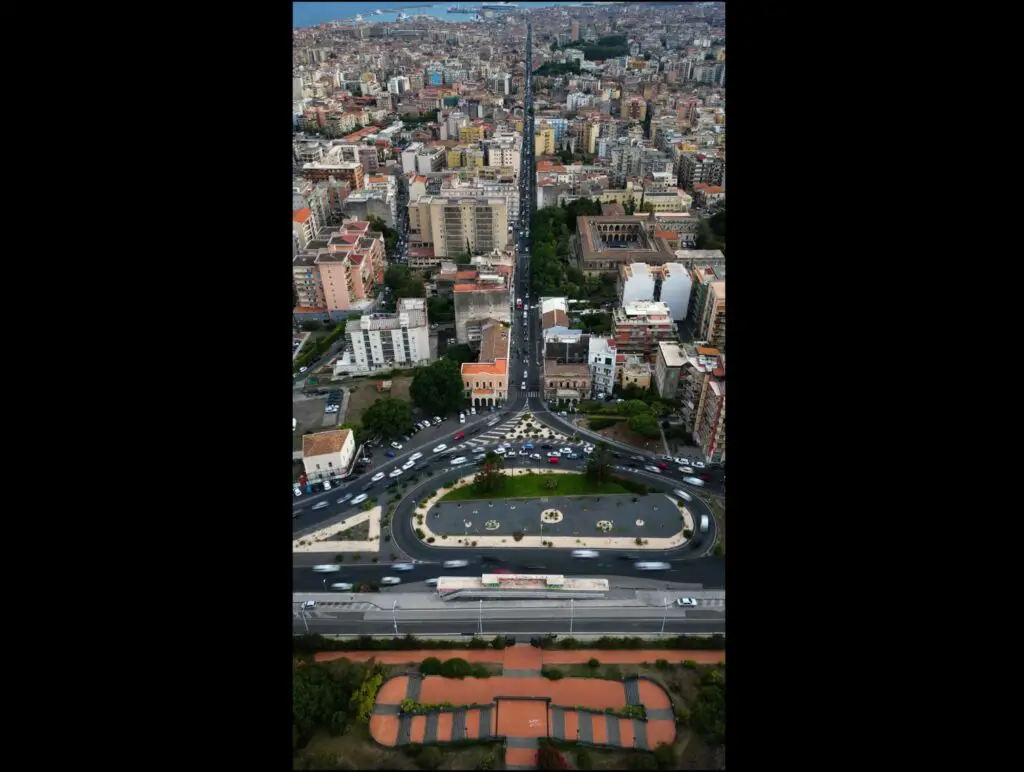
It can rotate the camera to shoot vertical footage maintaining the 4k resolution, while the Air 3 can achieve vertical video by cropping to a resolution of 2.7k
Footage Quality
Air 3 with the 70mm Lens
So, let’s start with the jewel of the crown. When I started using drones, about ten years ago, the thing I missed the most was the ability to switch lenses of different focal lengths, like in ground-based DSLR cameras
This option was introduced with the Mavic 3 and is now available in the Air 3. I love it!
With the first version of the Mavic 3, the telephoto lens had many limitations and the quality of the footage was much lower compared to the wide-angle lens
In the Air 3, the footage shot with the 70mm lens is excellent and very similar to the other lens, which makes it easy to integrate footage on the same projects
The telephoto lens is compatible with practically all the functionalities of the Air 3, including the intelligent flight modes. The only feature not compatible is Panorama photography
70mm is the ideal focal length to pair with the wide–angle one. I like the compression of the elements on different planes in the foreground and in the background and the parallax effect when rotating around a target
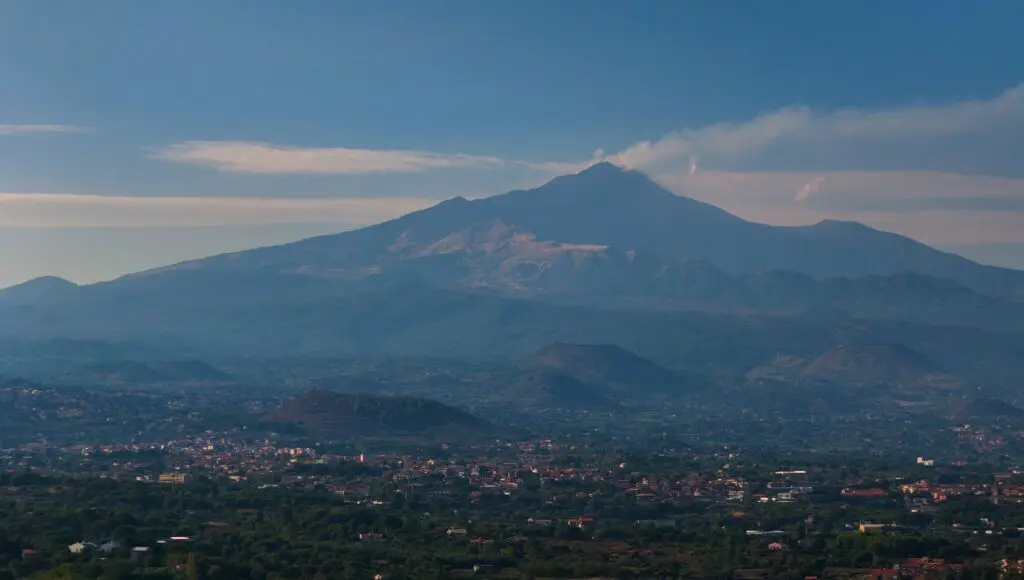
It is also valuable for getting closer to subjects that we could not otherwise reach, to avoid disturbing wildlife, or when tracking subjects from a point of view further away
The telephoto lens is compatible with the three color modes of the Ar 3. In Normal mode, it needs a touch of extra contrast and saturation to shine
For many users, the presence of this second lens could be enough to justify the price difference
8-bit Normal Mode
Let’s now compare the 8-bit Normal video mode, the one to be used with little or no editing
Air 3
In the Air 3, Normal mode is a thing of beauty: the colors are rich and very organic, the detail is outstanding and there is a good amount of info in the shadows. It doesn’t need any editing
Mini 3 Pro
Normal mode in the Mini 3 Pro benefits from some extra contrast and saturation
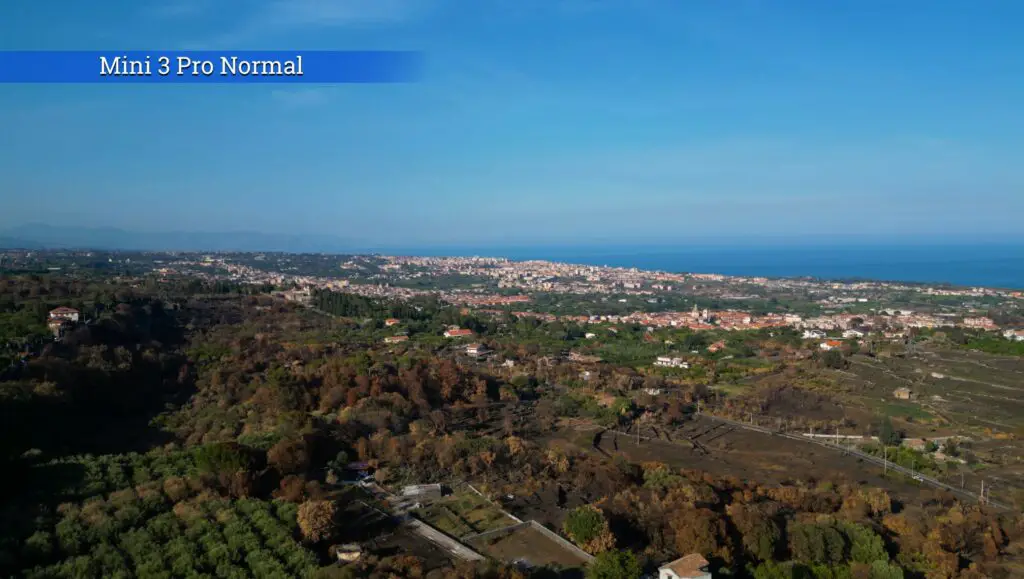
I find it quite good, although a little weak in terms of detail, but it is seriously outclassed by the Air 3
I don’t mean to bash the Mini 3 Pro, but in Normal mode, the difference in detail is striking, the footage of the Mini 3 looks a bit mushy compared to the Air 3
10-bit Color Modes
The Air 3 has two 10-bit color modes, D Log M and HLG, while the Mini 3 Pro has the 10-bit Cinelike
An 8-bit mode can display about 16ml colors, vs over 1bl for a 10-bit mode. The 10-bit modes have more color accuracy avoiding banding and other artifacts in uniform areas like the sky or the sea
D-LOG M Color Mode in the Air 3
It is a flat profile that needs a good dose of post-processing and the use of LUTs, meant for users with a good experience in color grading
It is similar to using RAW files for photography, although post-processing video is more complex than photos. It is used to adapt footage to different color schemes to fit specific projects
D-Log-M is a softer version of the well-known DLog: it is not as flat and easier to edit, but not as solid in high dynamic range situations
When using DLog M with the Air 3, it is easy to visualize the image on the screen, while on other models like the Mavic 3, the image is so flat that a Color Display Assist option has been added to enhance the visibility of the display by adjusting the contrast and saturation
Let’s compare D LOGM on the Air 3 to the 10-bit mode of the Mini 3 Pro, DCinelike
D Log M in the Air 3 is relatively easy to color grade using a correct LUT
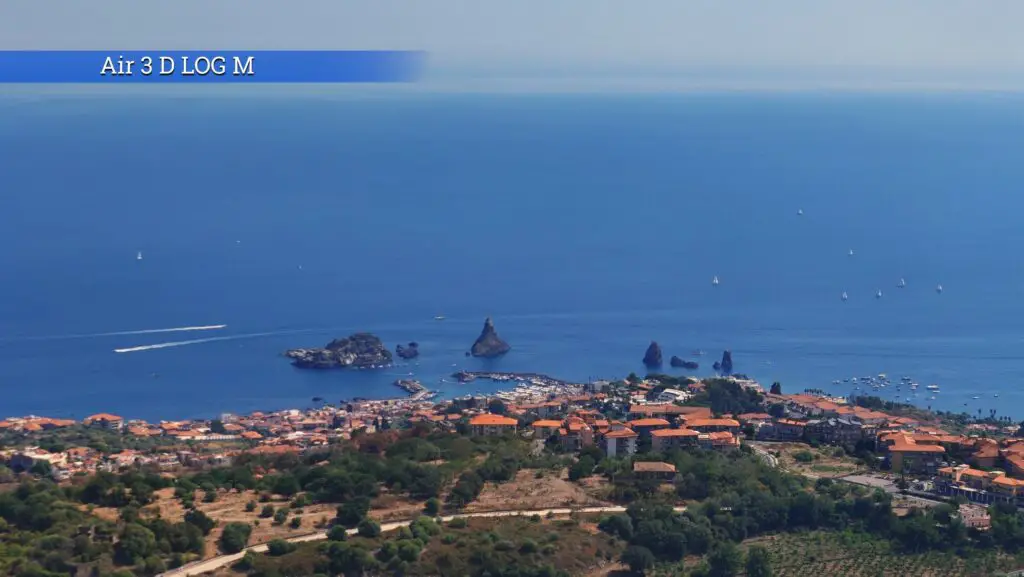
In easy light conditions, the result is very pleasing with reach colors and good detail, considering the small size of the sensor
In high dynamic range situations, it does a decent job, but it cannot maintain a lot of detail in the shadows while fully preserving the highlights
It is an excellent performance considering the price point, but for professional users, it cannot compete with the Mavic 3, which is in another league, as it should be given the price
HLG Color Mode in the Air 3
The 10-bit mode HLG (Hybrid Log Gamma) has vivid colors and good detail in the shadows and the highlights
HLG mode was originally meant to be used with high-resolution screens. To be used on a regular computer screen it requires a specific color mode
For more details about HLG mode, please refer to my article about Color Profiles of the Mini 4 Pro
D Cinelike Color Mode in the Mini 3 Pro
I was never impressed by the D Cinelike mode of the Mini 3 Pro, and don’t use it much
I think it is great to have a 10-bit profile in an ultralight affordable drone, but the quality of this mode is not something to write home about
In easy light, the colors are decent, but the detail is weak, and as soon as the camera is in the direction of the sun things get disappointing: there is not much going on in the shadows, poor structure of the sky, and overall washed out footage
Night Footage
The low-light footage for both models was taken half an hour after sunset with the very last twilight and artificial light, on two successive days at exactly the same time
Mini 3 Pro
An area where the Mini 3 Pro shines (forgiving the pun) is low light situations, due partly to the wide aperture of f1.7
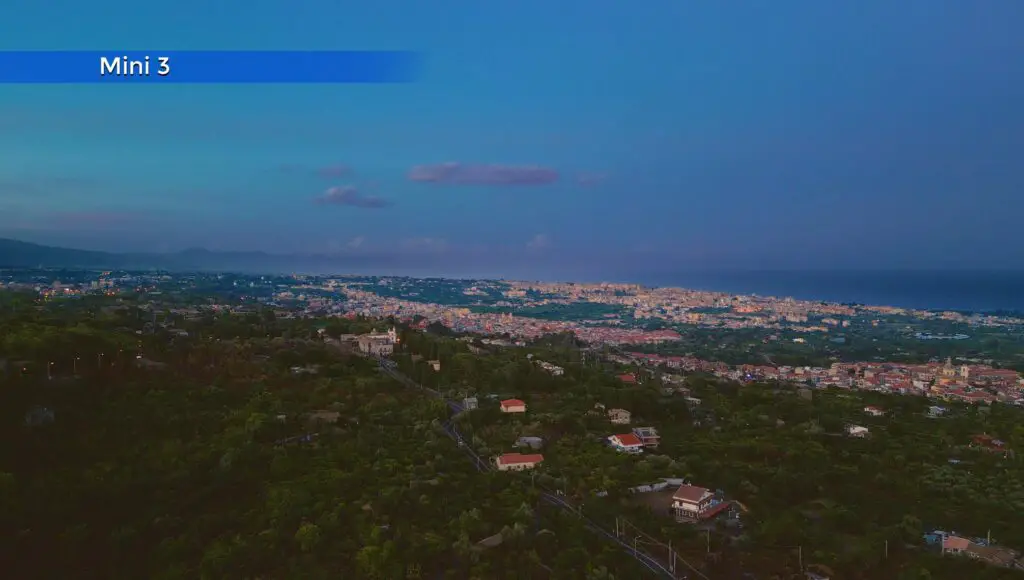
Even at low ISO values the shadows show a good amount of detail without any noise
Air 3
The performance of the Air 3 in Normal mode is excellent, with shadows similar to the Mini 3 Pro, but the colors of the bigger model are richer and, as usual, there is much more detail
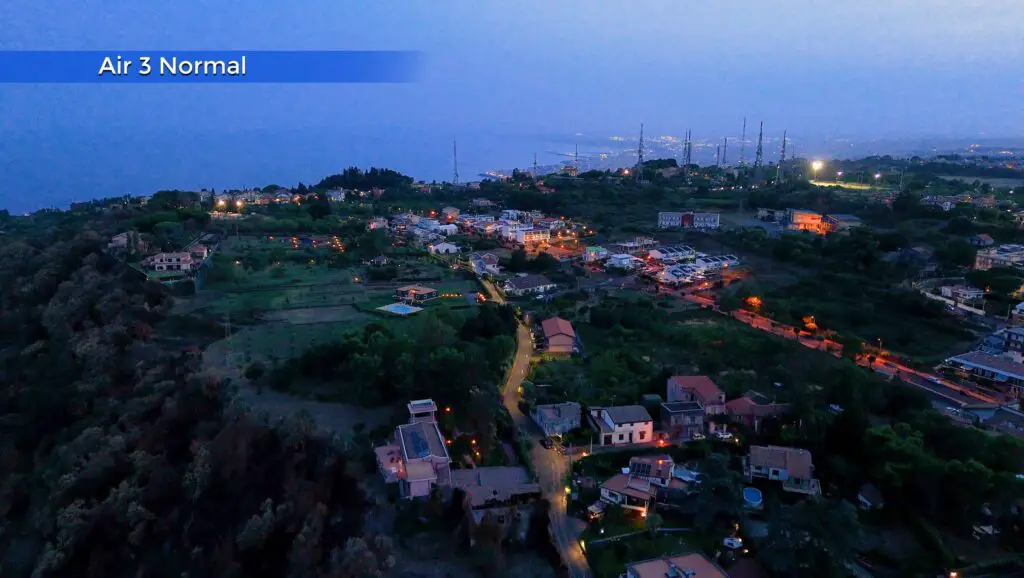
There is also a night mode with auto exposure. In the first iteration of this mode in the Mavic 3, I found it disappointing, with a fake plasticky look
I find that in the Air 3, the Night mode has improved, but I still largely prefer to use manual exposure for better shadows and more detail. This way I can also control the individual exposure values, which is crucial
Later on, in darker conditions, I raised the ISO value to a whopping 3200. The result is still acceptable, even though there is a loss of detail in the shadows
